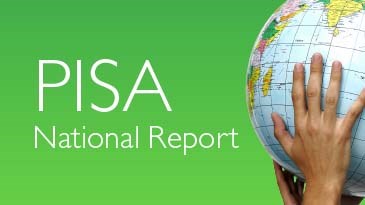Saskatchewan is last again.
Last week, the Organization for Economic Cooperation and Development released the results of its triennial Programme for International Student Assessment (PISA).
In science, the focus of the 2015 test, Saskatchewan 15-year-old students scored lowest of all the provinces. Additionally, Saskatchewan’s 2015 results were down from 2012. The test also measured reading and math proficiency, but to a lesser extent.
Chad Holinaty, superintendent of education for Christ the Teacher Catholic Schools said Sacred Heart students did not participate in the 2015 testing, but that the showing is a concern for the province.
“As a nation I think we saw some gains, but unfortunately the province took a bit of a dip,” he said. “I think the kids are going to need some help with that.
Even before last year’s programme, Holinaty noted the provincial education plan is targeting reading, writing, math and science as priority areas for improvement.
Quintin Robertson, director of education for the Good Spirit School Division, said he was unaware of whether Regional students participated, but that they don’t get local results in any event. Robertson was involved in a December 6 conference call with the Minstry of Education and other school division directors of education during which the results were discussed.
He said the ministry is formulating a response.
He noted that while the province ranked poorly compared to some other provinces, Saskatchewan students performed above the OECD average.
He also hypothesized students in the provinces that ranked highly—B.C., Alberta and Ontario—may be better prepared because students already participate in similar kinds of exams provincially.
On the science test the average mark for Saskatchewan kids was 496 out of 1,000, well below the national average of 528 and lagging way behind neighbouring Alberta’s Canada-leading 541.
Saskatchewan also had a higher ratio (17 per cent) of “low achievers” and a lower ratio (six per cent) of “high achievers” compared to the national averages of 11 and 12 per cent respectively.
Patrick Maze, president of the Saskatchewan Teachers’ Federation tried to downplay the poor showing.
“There’s just so much more that goes into education than science, reading and math,” Maze told the Saskatoon Star Phoenix. “I would put more weight into the fact that teachers conduct daily and continuous evaluation of their students and the closer the assessment is to the students, the more value that I would put into it.”
The good news is that Canada ranked fifth of 72 countries where Grade 9 and 10 students took the PISA test, so while bringing up the rear among their Canadian counterparts, Saskatchewan students are still fairly high performing relative to the rest of the OECD nations.
Furthermore, the result is an improvement over 2012 when Canada dropped out of the Top 10.
Approximately 20,000 Canadian students took the two-hour test in April and May of 2015.
Another favourable outcome for Canada is that there was no statistically significant difference in scores between boys and girls indicating a closing of the traditional gap in technical subjects.
The top country in the world was Singapore followed by Japan, Estonia and Finland.



